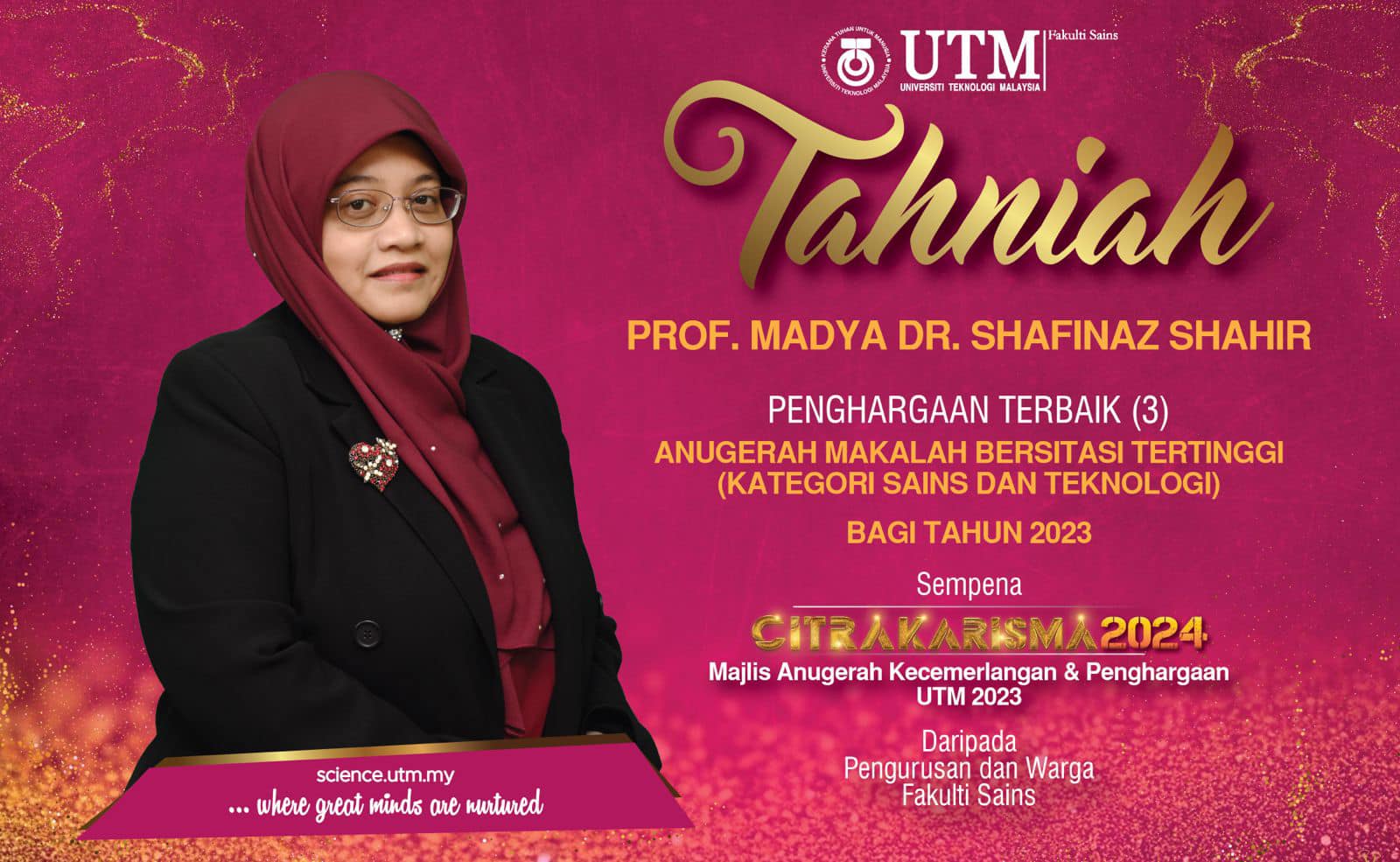The Faculty of Science at Universiti Teknologi Malaysia (UTM) proudly congratulates Prof. Madya Dr. Shafinaz Shahir for her remarkable achievement in receiving the Anugerah Makalah Bersitasi Tertinggi (Highest Cited Paper Award) in the Science and Technology category for the year 2023. This prestigious award was presented during the Citrakarisma 2024 event, celebrating excellence across UTM.
Dr. Shafinaz’s highly-cited paper, titled “Arsenic removal technologies and future trends: A mini review,” has significantly impacted the scientific community. Published in a leading journal, this paper provides an in-depth review of the existing technologies for arsenic removal from water, a critical issue for global water safety and public health.
Overview of the Paper
Alka, Sadiya, Shafinaz Shahir, Norahim Ibrahim, Mohammed Jibrin Ndejiko, Dai-Viet N. Vo, and Fazilah Abd Manan. “Arsenic removal technologies and future trends: A mini review.” Journal of cleaner production 278 (2021): 123805.
In this mini-review, Dr. Shafinaz and her co-authors explore various arsenic removal methods, highlighting their effectiveness, limitations, and potential for future development. Abstract
Arsenic contamination has been widely recognized as one of the most consequential environmental pollutants due to its anthropogenic activities. Arsenic toxicity and remediation have become the focus of many institutions, including industries, environmental groups, and the general public. The treatment of arsenic contamination is of irrefutable significance to lower floras and faunas, humanity, and their living ecosystem. This review comprehensively examines different arsenic toxicities to the environment and their associated removal techniques. To begin with, the appraisal focuses on the general background of arsenic occurrences in the environment, its related health hazards, and measurement techniques. In addition, it also provides a comprehensive discussion of how arsenic impurities can be removed from the environment using diverse established and advanced technologies like adsorption, ion exchanges, electrokinetic processes, electrocoagulation, chemical precipitation, phytoremediation, nano phytoremediation, membrane technology, and phytobial remediation. Finally, the pros and cons of the remediation/removal methods are enumerated, as well as their principal ongoing accomplishments. The simplicity, low cost, and easy operational procedure of adsorption technique and use of novel functional materials such as graphite oxides, metal organic frameworks, carbon nanotubes and other new forms of functional materials are better future alternatives for arsenic removal.
The paper also provides insights into the future trends of arsenic removal technologies, advocating for more research into cost-effective, sustainable, and scalable solutions. The comprehensive analysis presented in this mini-review has made it a key reference for researchers, policymakers, and engineers working on water treatment and public health issues.
Acknowledgment
The Faculty of Science at UTM extends its heartfelt congratulations to Prof. Madya Dr. Shafinaz Shahir for this well-deserved recognition. Her dedication to advancing science and technology, particularly in addressing critical environmental issues, is truly inspiring. We are proud to have her as part of our academic community, and we look forward to her continued contributions to the field.
For more details on her research and publications, visit science.utm.my.
This recognition reflects the commitment of UTM’s Faculty of Science to nurturing great minds and driving impactful research that addresses global challenges.
#utmfsresearch


